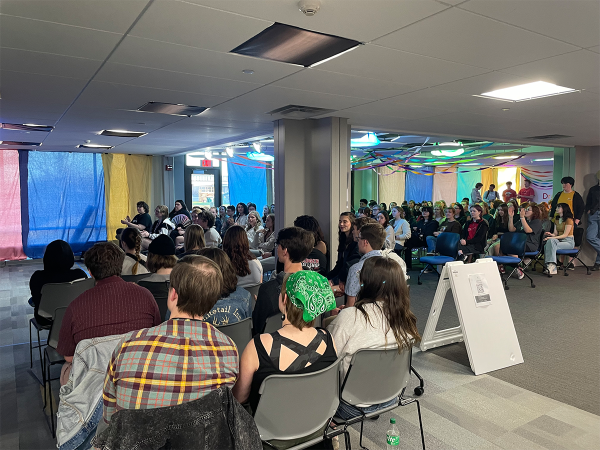Pura vida
La Cultura de Café
More stories from Alanna Huggett
Photo by Savannah Reeves
Coffee is like a drug to every college student, but, here in Costa Rica, good coffee is a way of life.
My host mom told me that one of her granddaughters has been drinking coffee since she was 3 years old. My mouth just about dropped to the ground when she told me. The consumption of coffee here is prevalent, but it is just another part of their culture.
The way Costa Rican coffee is made is quite different from the Keurig K-Cups and Instant Coffee Pots used here in the U.S. I learned this through a unique opportunity to tour a coffee plantation called Coope-Naranjo.
Coffee is not native to Costa Rica — the plants originally came from Cuba. Costa Rica is a relatively small country and in order to compete with other countries like Columbia and Brazil, they focus on producing quality over quantity. According to our tour guide Luis, in Costa Rica they’re only allowed to produce arabica coffee because it has a much better flavor (sweeter). The other kind of coffee is called robust coffee. It has more caffeine, but the flavor is much more bitter.
A typical coffee tree produces fruit for 25 years on a coffee plantation. After 15 years, the plants are given a “rejuvenation trim” as an extra boost to help them continue producing fruit until they reach the age of 25. When a tree is trimmed it’s cut down to about 2 feet tall and when the leaves and the rest of the plant regrows, more fruit is produced.
Another type of trim is the “health trim” which is used to fight rust, a type of bad fungus that damages the leaves of the coffee trees. The only thing the plantation uses to fight the rust is sun and low humidity. The plants are cut down to 2 feet high as well and the rust damaged-leaves are burned or buried to solve the problem.
Harvesting season in Costa Rica is typically once a year from November to January. All of the flowers bloom at different stages so the harvesters/workers need to go through the coffee plantation multiple times to gather all of the fruit. Workers are paid by the basket and the average employee can pick 10 to 15 baskets a day. A lot of the workers are immigrants from Nicaragua.
Once the fruit is harvested it needs to be dried. There are three different ways to dry the beans: the sun, air circulation and industrial drying machine. Using the sun takes the most time as the beans need constant surveillance and need to be moved every hour and a half. Through the drying process the beans are able to absorb sweetness. The fastest way is the industrial method. They use a machine and the rotate the beans alternately heating and drying them. The beans are completely dry in about six to nine hours but they aren’t as sweet and don’t absorb as much pulp.
After learning about the development process, my friends and I were all eager to learn how to make this delicious, rich coffee. Here’s what Luis told us:
Ingredients: pot, coffee, dripper and coffee sock
My mama tica/host mom calls the dripper/coffee sock “Chorreador con una bolsa de franela.”
Steps: (Similar to the Cowboy Coffee Method)
- Measure coffee into pot.
- Let the coffee simmer, look for steam but no bubbles.
- Remove from heat and let the pot sit for 1 or 2 minutes.
- Add more water, enough so that the level of the water is higher than that of the coffee (don’t add all of the water as the coffee is “hibernating” at this point, the water wakes the coffee up).
- Add the rest of the water after a few minutes and let it cook for 2-3 minutes, the mixture should look creamy, add a cover to the pot (this part is very similar to the French press method).
- Once you see a brown foam and clear bubbles, break the coffee (it should be crusted over) with a spoon, letting it sink.
- Pour the coffee through the sock and it should be nice and translucent as it passes through the sock, use your spoon to twist the sock to get the remaining coffee out.
- ¡Disfruta! (Enjoy!)
I only saw the process done once but I’m hoping to get some proper lessons from my host mom soon. Until then, I plan to continue to enjoy the luxury of Costa Rican coffee and my greater appreciation of the all the hard work that goes into a single cup of coffee.










